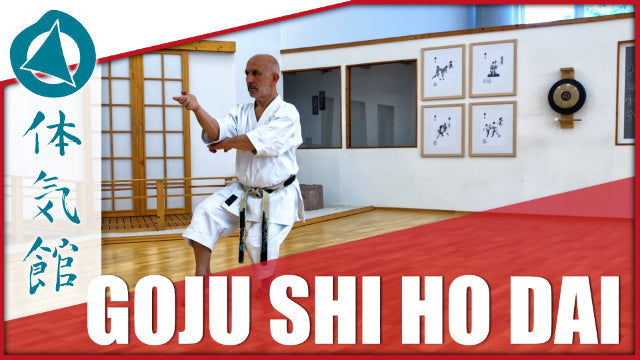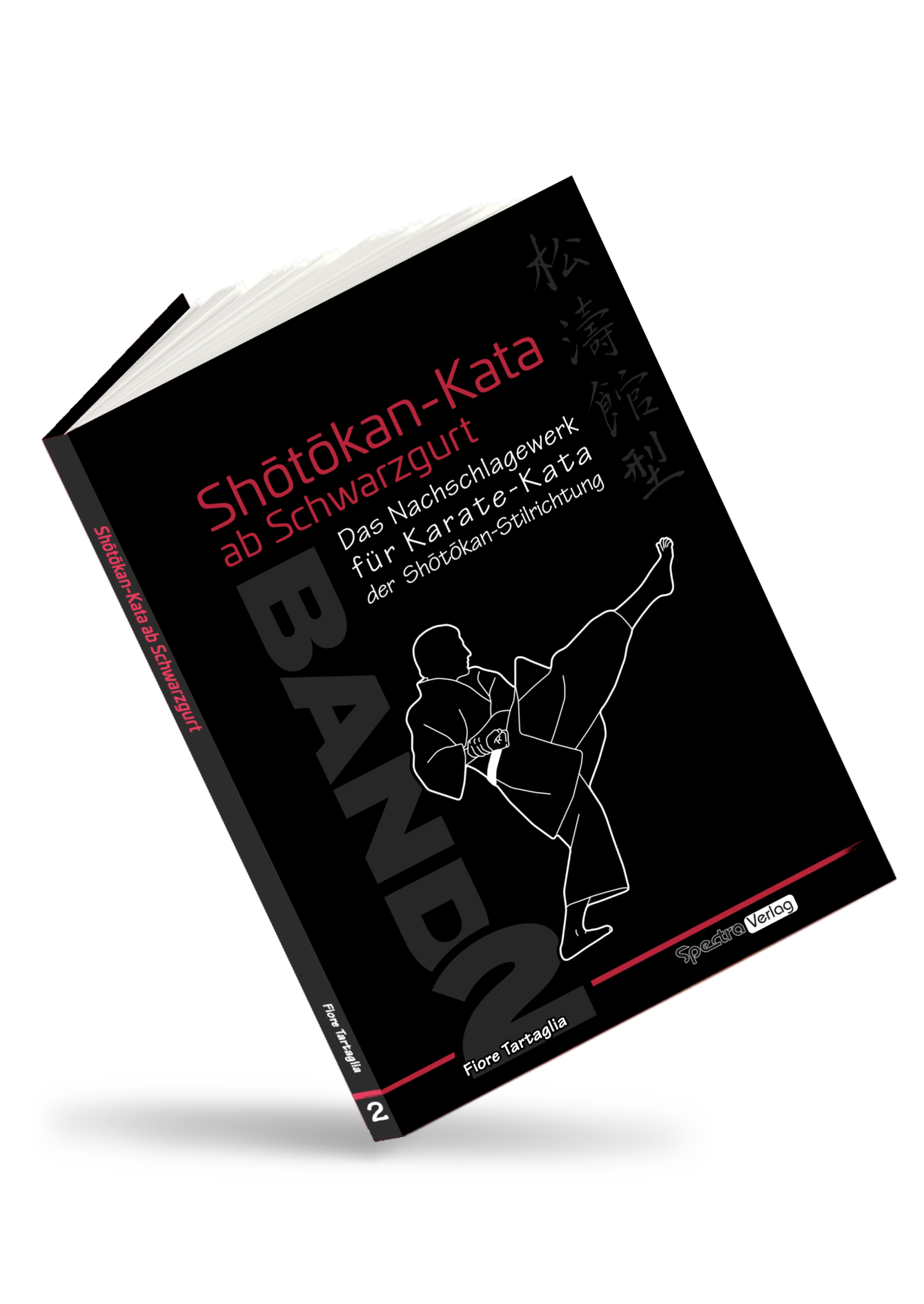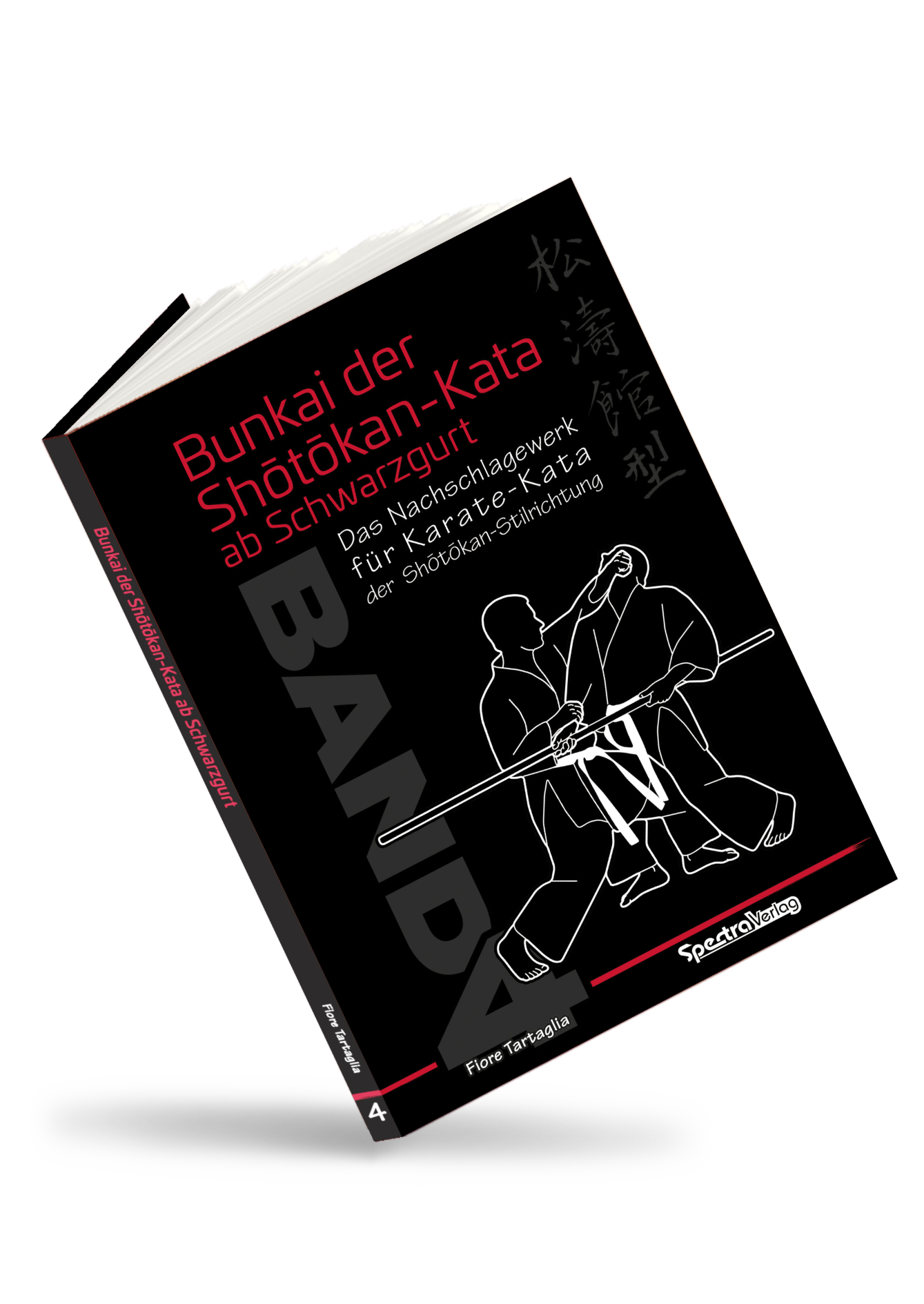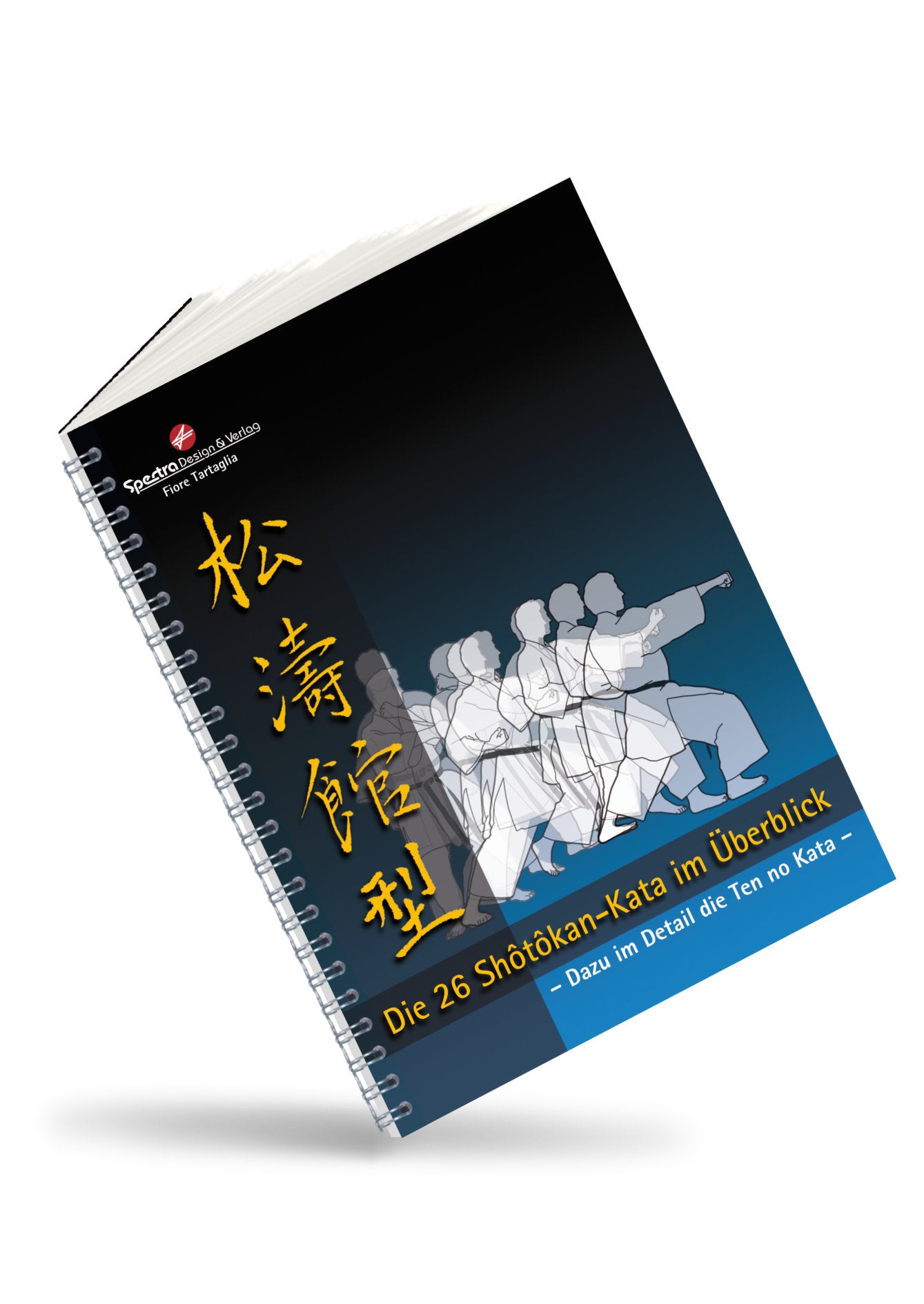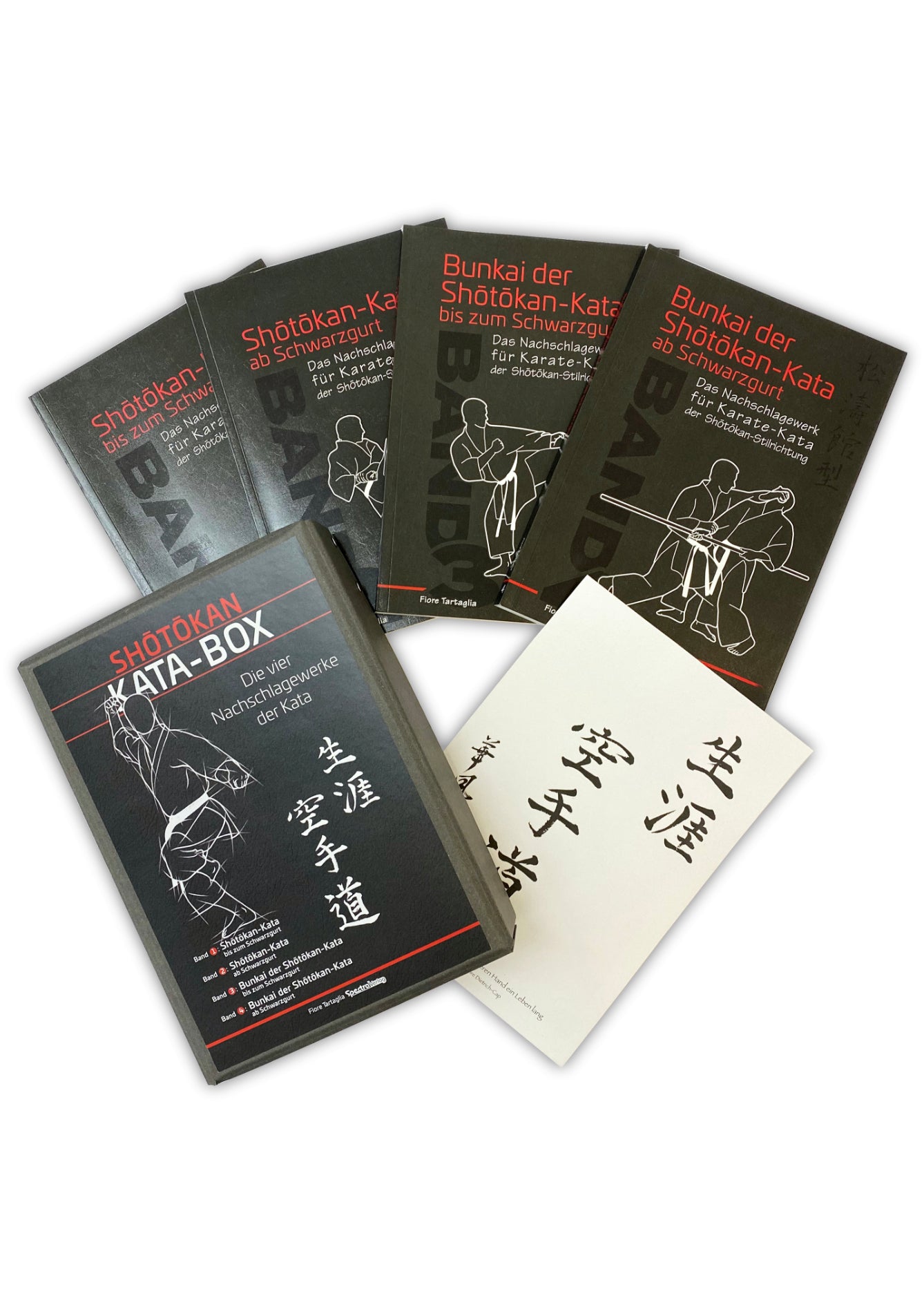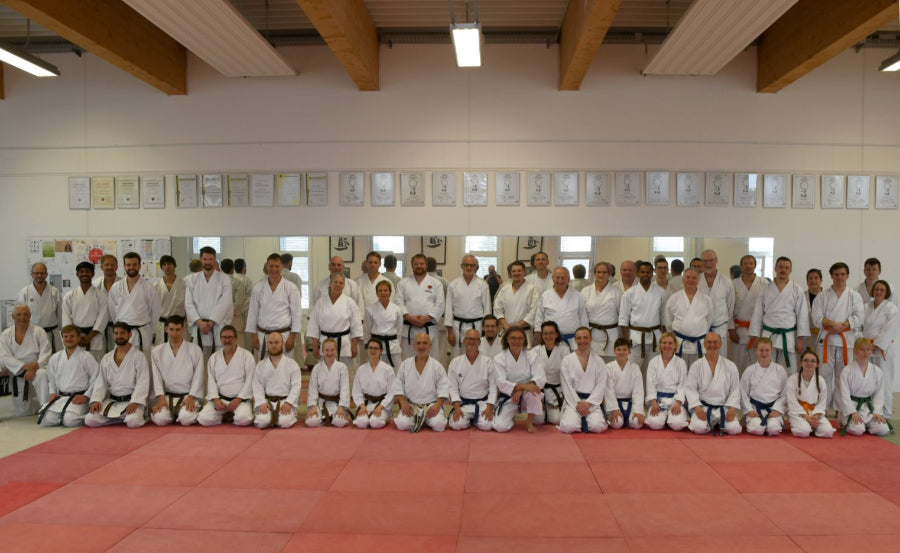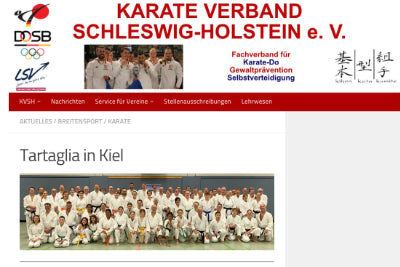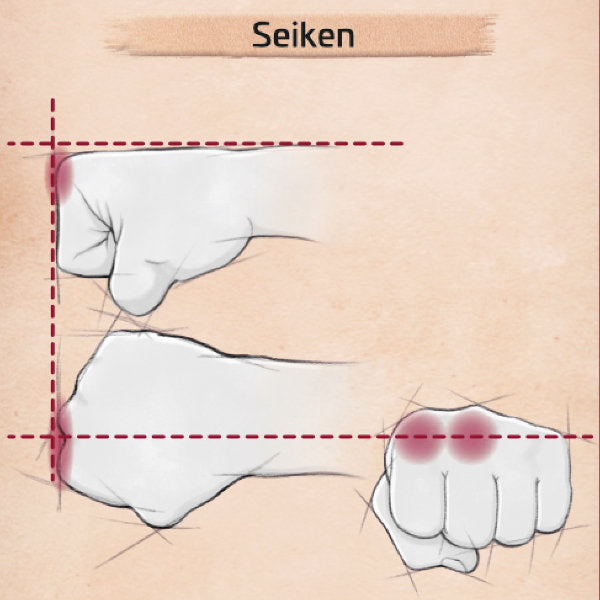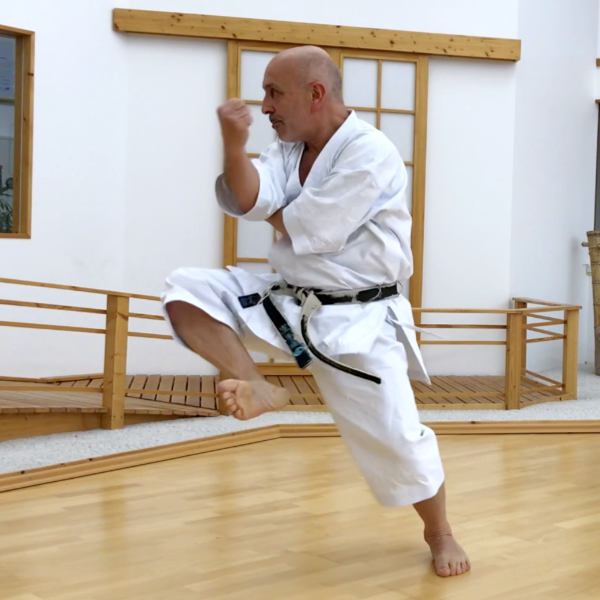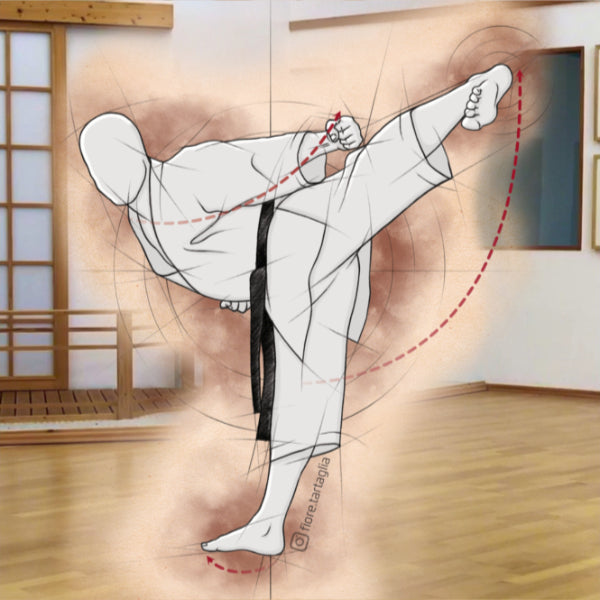GOJŪ SHI HO SHŌ – 54 STEPS – SMALL
The original form of the two Gojū-shi-ho kata originated in China and was called "Usēshi." Later, two kata were developed from it, the current versions "Dai" and "Shō."
Gojū shi ho shō differs from the "Dai" version primarily in the use of the Kōkutsu dachi stance instead of Neko ashi dachi (which makes "Shō" appear somewhat more static than "Dai") and the increased use of shutō and haitō techniques. The enbusen is also different here: It develops more broadly, to the left of the starting point.
Here, too—as in Gojū shi ho dai—the two defensive techniques Tate shutō uke are shown at the beginning of the kata in Zenkutsu dachi. The application of the Fudō dachi stance is just as correct at this point.
The last gliding step should be particularly long so that it ends on the same point as it began. Due to the aforementioned difference to Gojū shi ho dai (Kōkutsu dachi instead of Neko ashi dachi), "Shō" appears somewhat more static, but also calmer. It conveys the feeling of superiority. Only a karateka whose technique and personality have reached a certain level of maturity can meet the high demands of this kata. Despite their strong similarities, one should try to practice the two Gojū shi ho with their respective unique character traits, as they teach different aspects. Together with Unsu, they are the most demanding kata in the Shōtōkan style.
They should be practiced or demonstrated with this in mind, so that not only do the techniques express the appropriate level, but the karateka, aware of his abilities, is able to feel gratitude and humility. These, too, are attitudes that distinguish the karateka and make him a "master" in this discipline.
Duration: approximately 100 seconds
